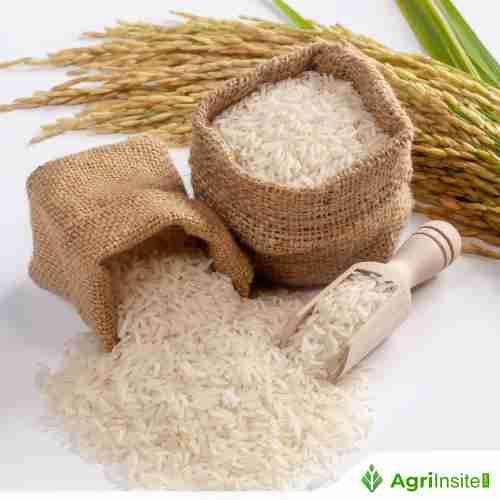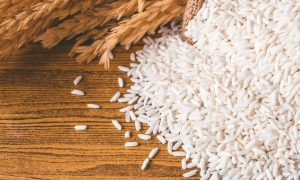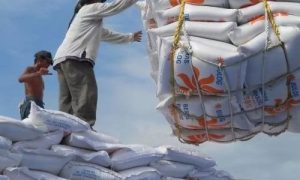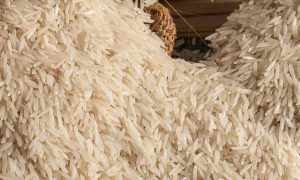50% US tariff to hurt Indian basmati, boost Pakistan’s share

A 25% additional US tariff on Indian basmati rice—raising total duty to 50%—will make exports costlier, hurting India’s market share and benefiting Pakistan, which faces only 19% duty. Punjab, India’s top producer, may see falling prices and cultivation, risking farmers’ income, industry losses, and supply chain disruptions.
CHANDIGARH: With US President Donald Trump slapping additional 25 per cent ad valorem duty above the 25 per cent reciprocal tariffs that were announced on August 1 taking the total tariff burden to 50 per cent thus now the Indian basmati rice exports will bear the brunt and the gainer will be Pakistan, as the market share of this aromatic, premium rice variety from the neighboring country will increase in United States and share of Indian basmati is likely to decline sharply.
This development is likely to severely affect Punjab, the highest producer of basmati rice in the country, accounting for 40 per cent of production, followed by Haryana and other states. While the total market of basmati rice in the United States is of approximately 5 lakh metric tonnes (LMT) of this at present India exports about 3 LMT approximately worth $350 million and rest 1.8 LMT is exported by Pakistan.
As presently the average price is $1200 per metric tonne (MT) and with the new tariff another $600 per MT will be added thus it will be $1800 and on the other hand Pakistan, which enjoys low tariff of 19 per cent as the their basmati will cost only $1450 a difference of $ 350 per MT.
In the 2023–24 fiscal year, a total of 59.42 lakh metric tonnes (LMT) of basmati rice was exported from the country. Of these exports, basmati rice was mainly sent to five countries: 7 LMT to Iran, 11 LMT to Saudi Arabia, 8 LMT to Iraq, 3 LMT to Yemen, and 3 LMT to the US, with the remainder going to other countries.
According to Agricultural and Processed Food Products Export Development Authority (APEDA) under the Union Ministry of Commerce and Industry India’s foreign exchange earnings from basmati rice exports were Rs 48,000 crore in 2022, out of which Punjab contributed at least 40 per cent.
Speaking to TNIE, Ranjit Singh Jossan, Vice-President of the Basmati Rice Miller and Exporter Association, said, “ The US imported nearly 3 lakh metric tons of Indian Basmati last year, valued at approximately $350 million. The additional 25 per cent tariff imposed by the US on Indian basmati rice exports poses a serious challenge to the industry, effectively increasing the total duty to 50 per cent.
This move will significantly reduce India’s price competitiveness. Currently, Indian basmati is exported to the US at an average price of $1200 per metric tonne (MT) and with the new tariff another $600 per MT will be added thus it will be $1800, making Indian rice significantly more expensive than that of competing countries, especially Pakistan, which enjoys low tariff of 19 per cent as the their basmati will cost $1450.
Thus the demand for Indian rice in the US will almost disappear, putting our centuries-old market at risk of vanishing.’’ Jossan added that the consequences are manifold, “ First, India could lose substantial market share to Pakistan and other exporters of aromatic or specialty rice varieties. Second, the US, which historically accounts for 8 to 10 per cent of India’s basmati exports, will witness a sharp decline in imports.
Export volumes could fall by 50 per cent to 80 per cent. This decline will hit small and medium exporters and rice millers the hardest, as they are already grappling with reduced margins and unsold inventory.’’
“This tariff is not just a trade barrier – it is a strategic setback for India’s agricultural export sector. To counter this, India must engage in immediate diplomatic negotiations with the US to seek tariff relief or preferential access. At the same time, the government should support exporters through financial incentives, export subsidies, and an aggressive push to diversify markets. Strengthening branding efforts in Canada, Middle East and Europe is crucial to offset these losses. The government must work closely with the rice sector to protect basmati exports and prevent severe financial losses for farmers and the industry,’’ he demanded.
Jossan warned that unless swift and coordinated policy measures are taken,“ India’s basmati rice industry risks losing a key market, causing long-term economic and reputational damage that may be difficult to reverse.’’ He said that already due to the ongoing Israel-Iran war the basmati exports to Iran have totally stopped, as the operations at the Bandar Abbas port in Iran which were earlier suspended but now have resumed.
This development is likely to severely affect Punjab, the highest producer of basmati rice in the country, accounting for 40 per cent of production, followed by Haryana and other states. As Basmati is less water-intensive crop than paddy (Non-Basmati) and its cycle is also one month shorter than paddy. It has shown a decrease from 7.63 lakh hectares in 2015-16 to 6.39 hectors in 2024-25.
The prices of Basmati rice (including 1121 and other varieties) dropped from Rs 4,500 per quintal in 2022-23 to Rs 3,500-3,600 per quintal in 2023-24. Exporters now fear that due to the present situation, prices could fall further to around Rs 3,000 per quintal. As a result, farmers may choose not to plant this premium aromatic variety and instead revert to growing regular paddy, which has a Minimum Support Price (MSP) of just over Rs 2,400 per quintal this year.
As per the Punjab agriculture department, 1509, 1121, 1718 basmati varieties are grown over 80 per cent of the area in the state and it fetches lower price. The 1121 basmati, which is best among the premium varieties, gets a higher price. Meanwhile the (1401 PUSA variety) grew in about five to six per cent of total area.
The milling capacity of Basamti rice in the state was around 40 lakh metric tons as of now which has increased in last four years from 25 lakh LMT as the number of mills is now 210 as compared to 80 earlier. With the new basmati crop expected to arrive from mid-September, the situation is set to worsen. The farmers might also face the brunt, as now the paddy sowing season has started and if the situation remains the same or even if it improves, it will take time for exports to resume, thus causing a further decline in prices.
Jossan further said that lower demand from the US threatens to reduce procurement prices in Punjab, Haryana, and western Uttar Pradesh, which will directly affect farmers’ income from the upcoming crop and disrupt the entire supply chain. “ Due to this crisis, the ripple effect is now visible.
The prices have dropped from Rs 7,100 per quintal to Rs 6,200 per quintal, as the exporters were buying at this rate from the rice millers for export purposes. Also, the local domestic wholesale prices have fallen by Rs 9 per kg, from Rs 71 per kg to Rs 62 per kg. Thus, in the coming days, the retail prices might fall. Also, now the millers might also suffer a financial loss as the basmati stocks are lying with them and exporters will not buy them till the time the situation does not improve,’’ he added.
To Read more about Rice News continue reading Agriinsite.com
Source : The New Indian Express














